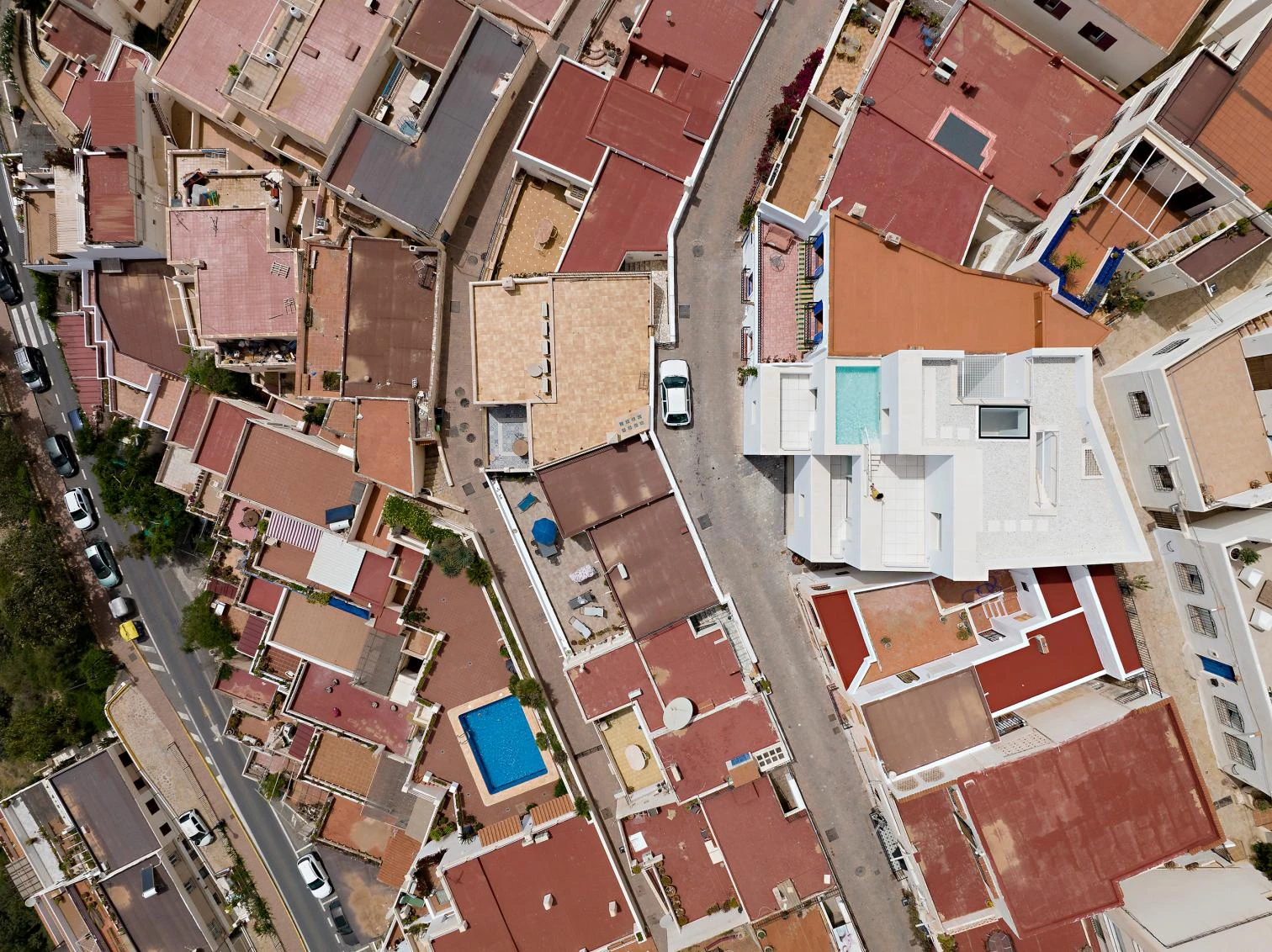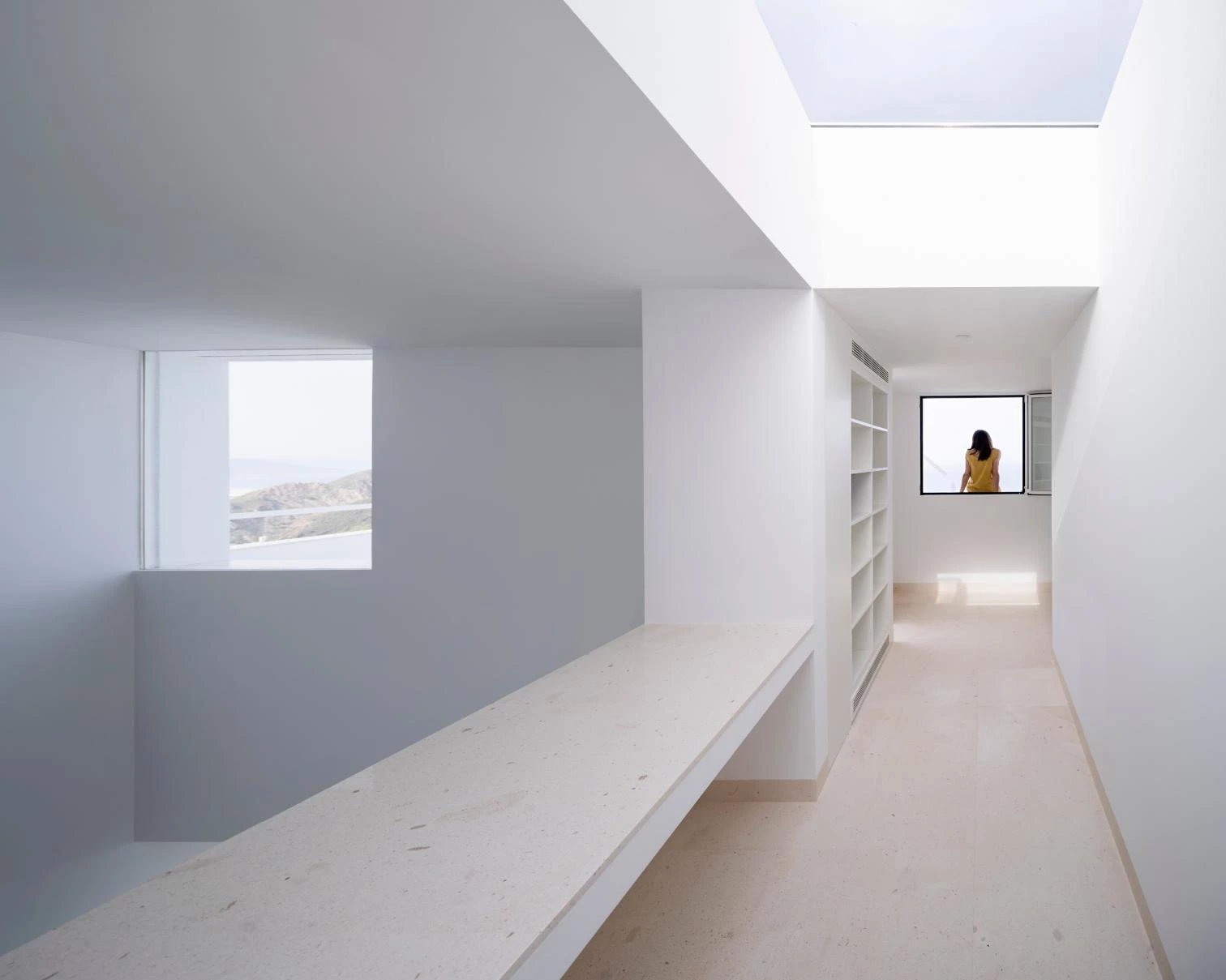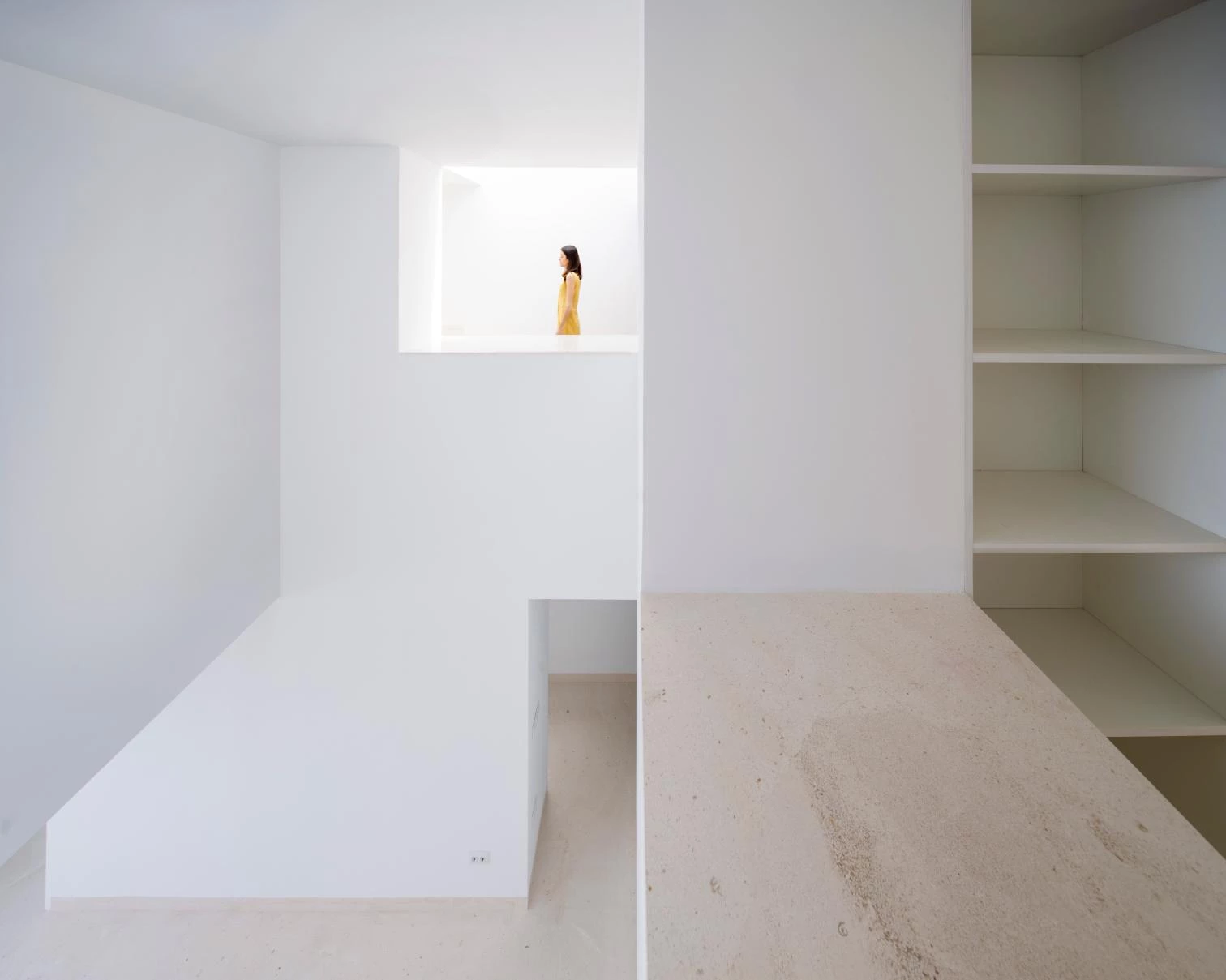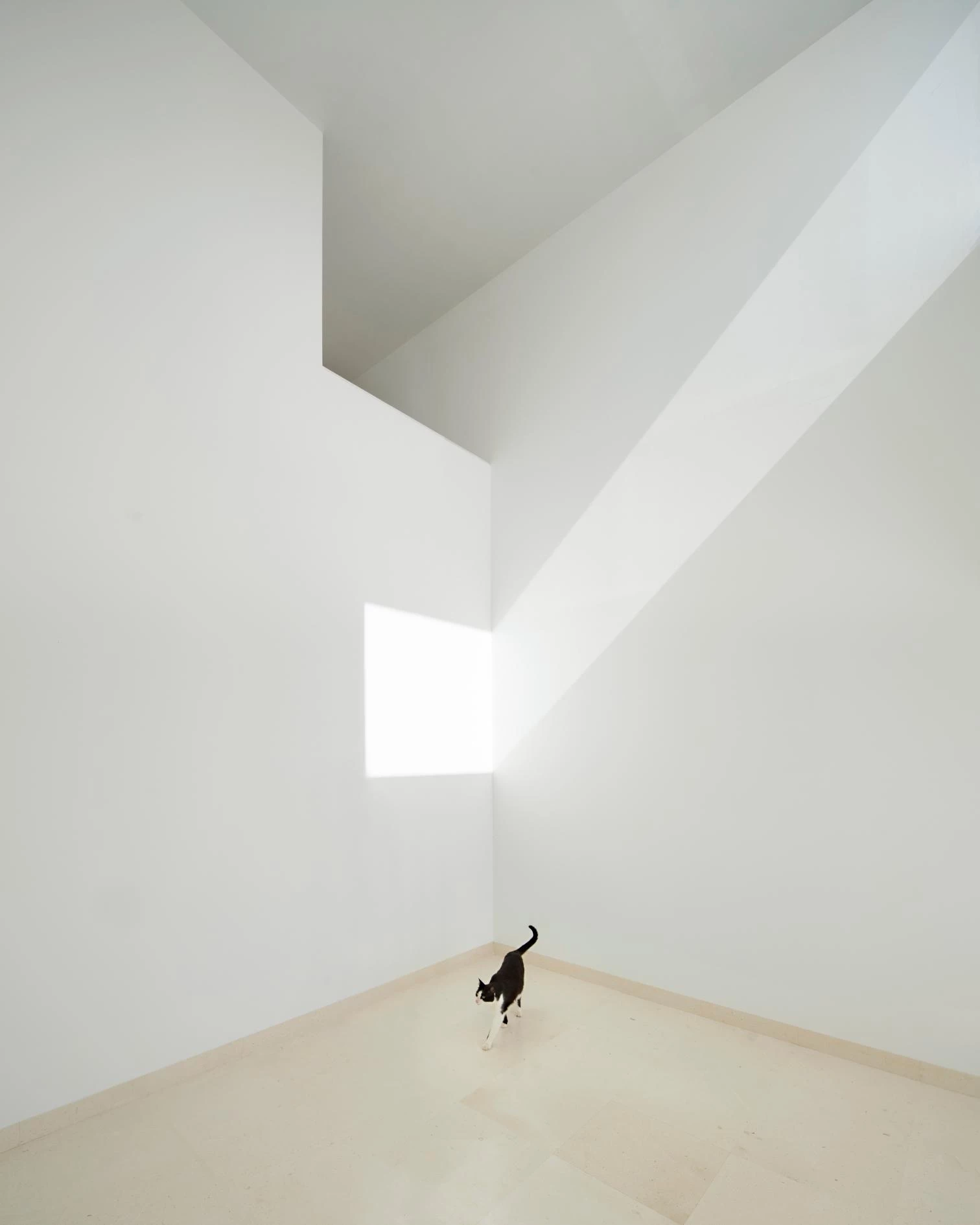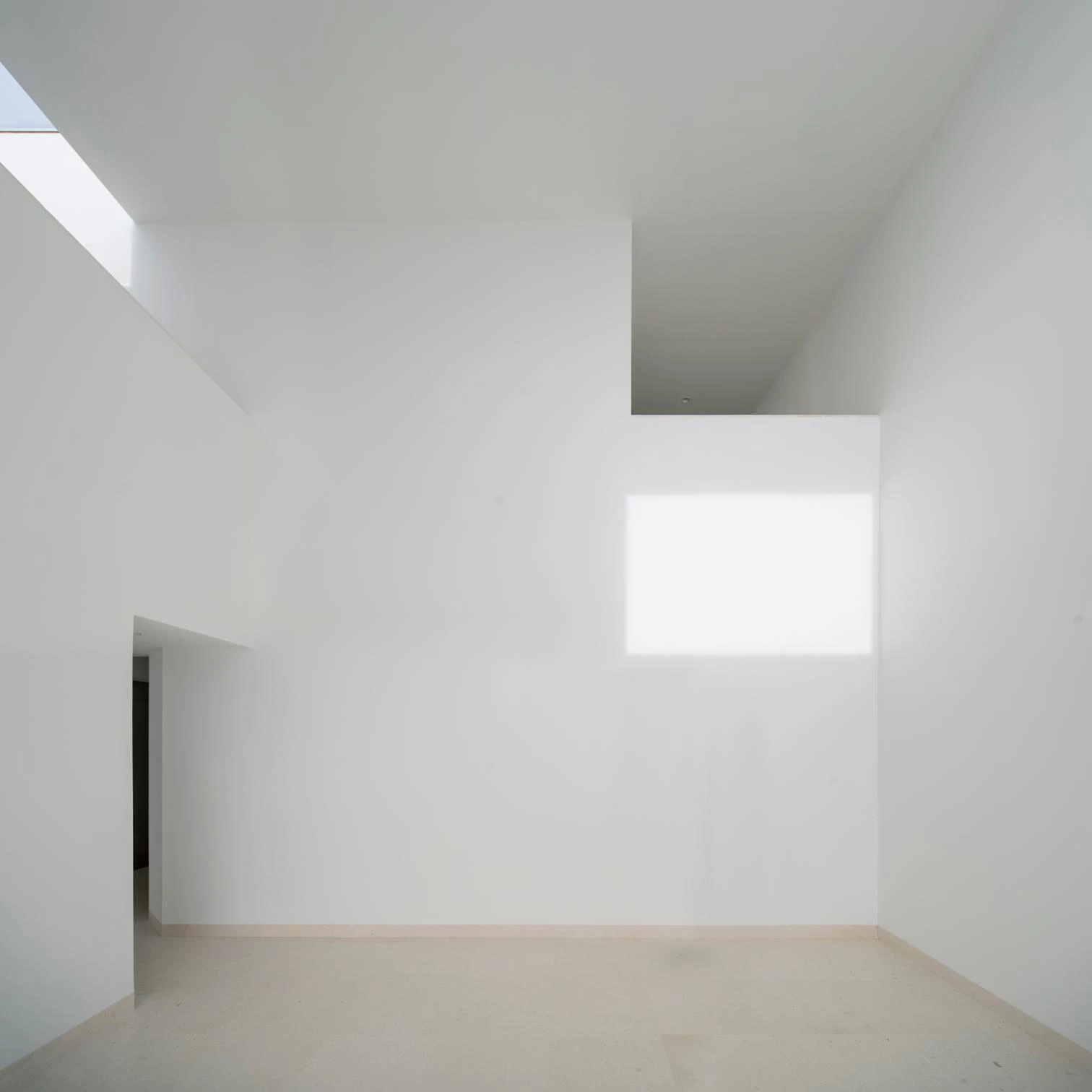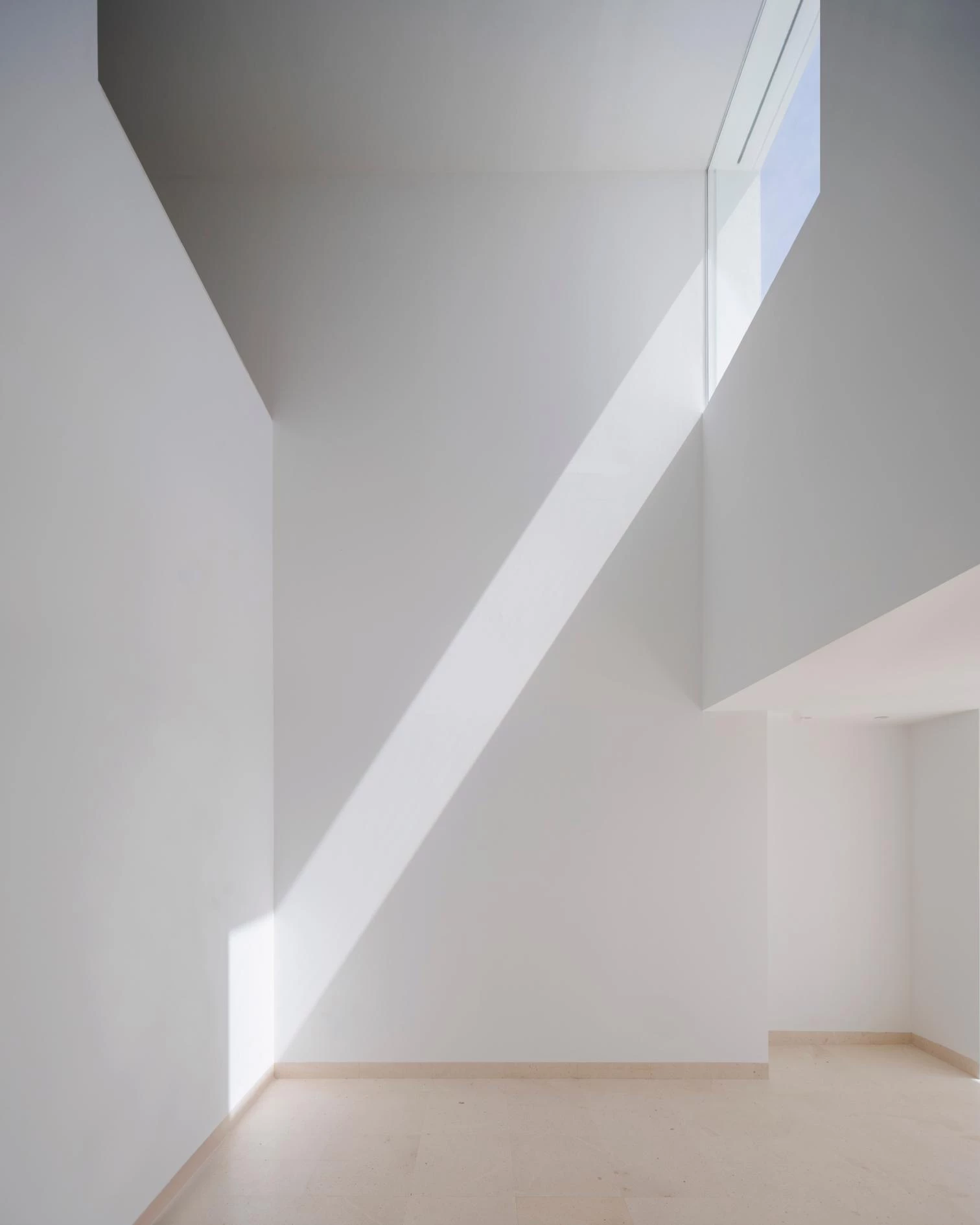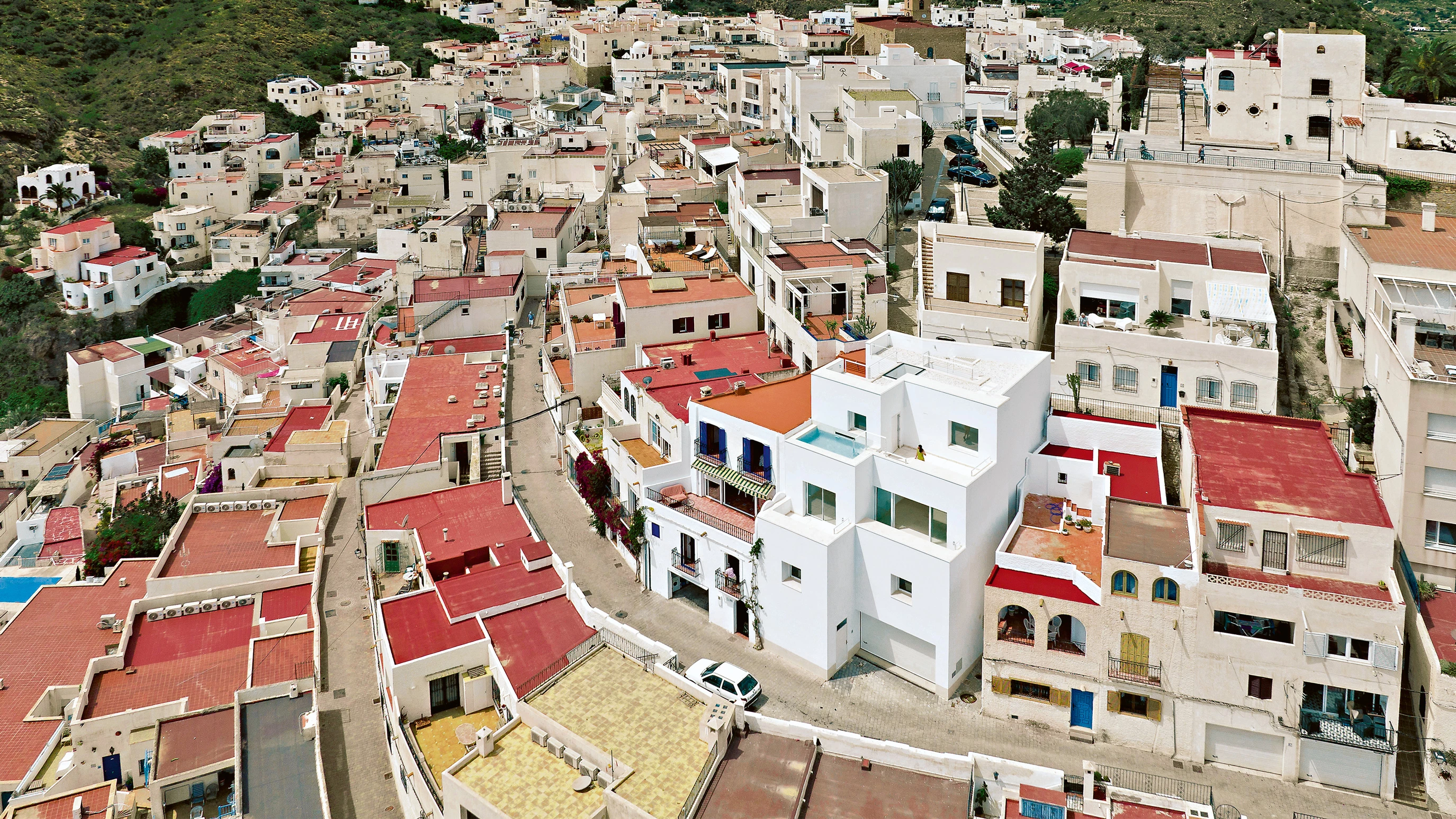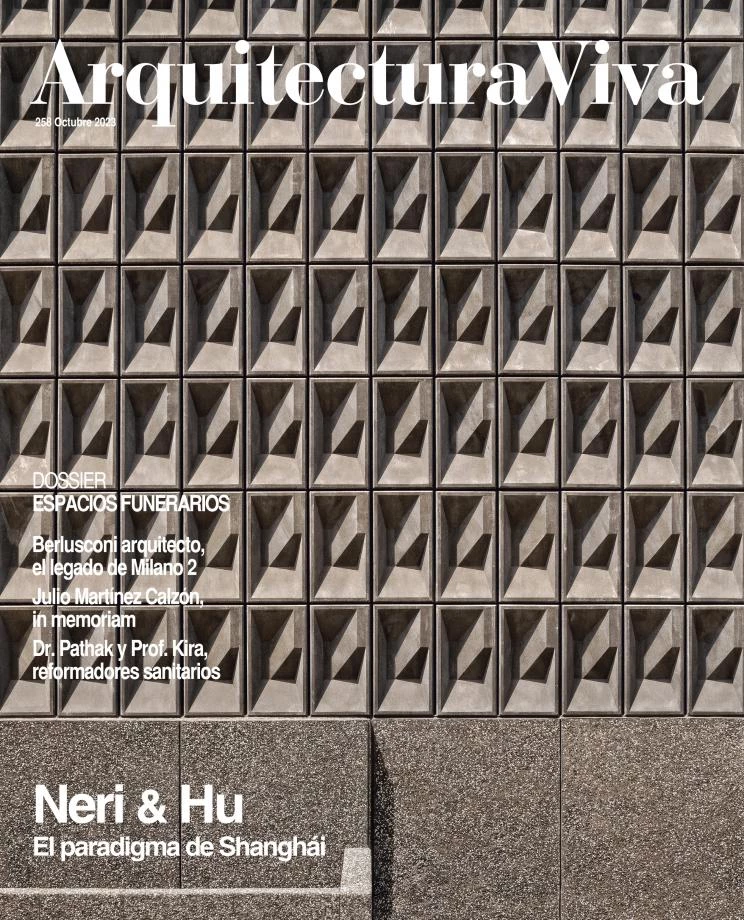House in Mojácar
Alberto Campo Baeza Modesto Sánchez Morales- Type House Housing
- Date 2018 - 2023
- City Mojácar (Almería)
- Country Spain
- Photograph Javier Callejas
When in 1964 Bernard Rudofsky filled the MoMA galleries with ‘Architecture Without Architects,’ among cave houses of Cappadocia and adobe huts of Mali he included two photographs of Mojácar taken by José Ortiz Echagüe, with a short text in which he bemoaned how uncurbed tourism was already making a dent on the silhouette of this town in Almería province through the construction of hotels and villas rendered in a false vernacular style. Nevertheless, the Moorish charm of its alleys and buildings perched on the rock has not faded, and continues to make any intervention defer with humility and restraint to the overall view of the place.
On a plot boxed in between party walls – steep like any other tract of land there – stands a house designed as a cascade of volumes descending from the entrance level, on which a single floor is built even though two are permitted, a gesture of respect towards the neighbors behind. Everything is whitewashed the traditional way to dilute the dwelling amid the cluttered casbah and to bring in that Mediterranean pureness which also comes from the white lime finishes of the terraces and from the sunlight itself, which flows into the double-height main space through openings intelligently positioned to ensure clear views of the sea beyond.
